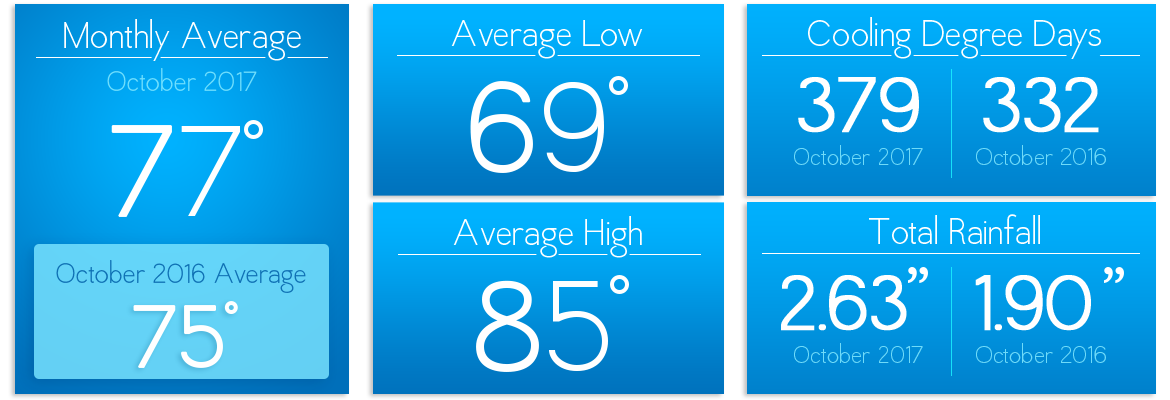Duncan’s Digest
HURRICANE IRMA HITS HARD
Hurricane Irma is indeed the biggest, baddest, meanest named storm we’ve seen in a long time. Irma’s damage to our system was more significant than we experienced in the infamous 2004 hurricane season.
Hurricane Irma – the aptly named “war goddess” – arrived with an arsenal of hurricane-force winds. She wreaked havoc as she traveled directly through SECO’s service territory as a Category 1 to a Category 3 hurricane, per data from the National Hurricane Center. Power outages began late Sunday evening September 10, and members continued to lose power through Monday morning.
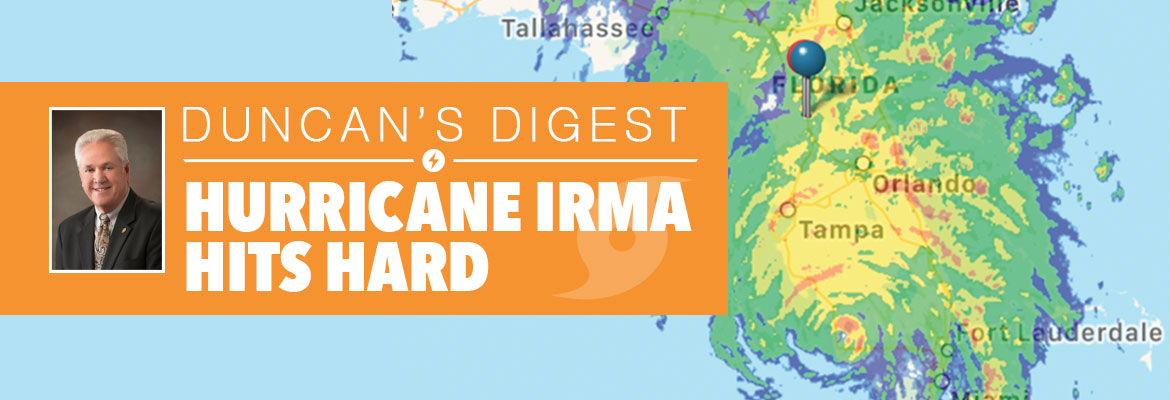
From Irma’s onset until winds subsided Monday mid-day, approximately 139,000 outages were reported by members and captured by our outage management system. Over half of our system was damaged by the hurricane-force winds with lines, transformers and poles on the ground covered by trees and debris.
Executing an emergency action plan before, during and after a named storm is a standard practice for a Florida utility like SECO Energy. Storm hardening and emergency response are key investments for a not-for-profit electric cooperative. To successfully react to a weather crisis, we rely heavily on our tried and true emergency response plan and advanced preparation.
Members always want to know how SECO decides who is first in line for restoration. Florida requires substations and feeders serving hospitals, shelters, schools and government agencies to be restored as the highest priority. The next priority is restoring power to large groups of members, and then to less populated areas with individual electric services.
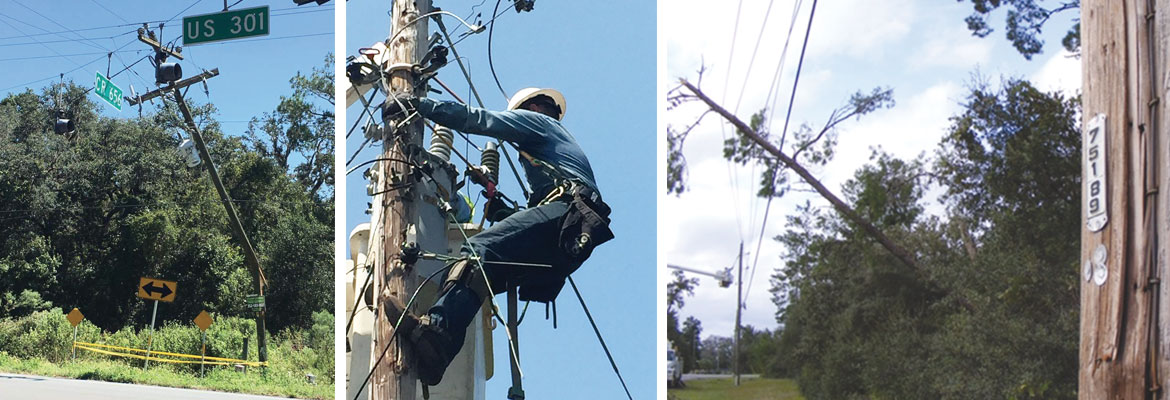
Due to SECO’s demographic, we serve a large number of nursing homes and assisted living facilities. During Hurricane Irma, these facilities became a priority as well as they began to run out of generator fuel. The same held true for communication towers a few days into the recovery. Water treatment facilities and lift stations were also a strong consideration.
The bottom line is every member wants power turned back on – now. SECO is sensitive to that, and we understand the discomfort and inconvenience members experience. Personally, I slept on a cot in my office for four nights because my home was without power. I’m sharing that not for sympathy but to emphasize that SECO follows the plan and does not give special treatment or favors.
Once an emergency begins, logistics like fuel, food, lodging, manpower and a solid work plan are all critical to a timely restoration. Securing line and tree trimming contractor support from neighboring areas was difficult because Irma had such far-reaching effects. We searched far and wide and brought in contractors from Alabama, Colorado, Georgia, Illinois, Indiana, Louisiana, Michigan, Missouri, North Carolina, Ohio, Pennsylvania, Tennessee, Texas and other parts of Florida.
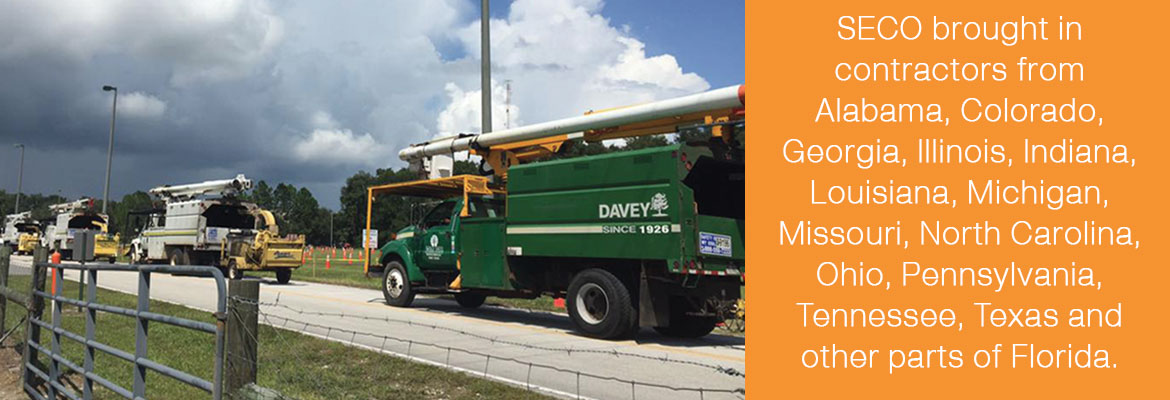
Fuel, ice, food and hotel rooms for these folks became a logistical challenge as the state seemingly shut down before, during and after Irma. From the beginning of the restoration effort on Monday, fuel availability for our trucks was limited. Traffic on I-75 southbound delayed the out-of-state contractors’ arrivals. Evacuees understandably fled from coastal areas to central Florida, reducing the availability of hotels to lodge our restoration teams from out of state.
Contract line and tree crews arrived and suited up alongside our SECO home team after winds died down around noon that Monday. These professionals were in it to win it. SECO made significant progress, restoring power to over 90,000 members during the first three days of restoration – 49,000 members remained without power.
To better communicate with members, SECO developed an interactive restoration plan map that was launched Tuesday evening. The map was updated nightly to reflect the next day’s restoration plan.
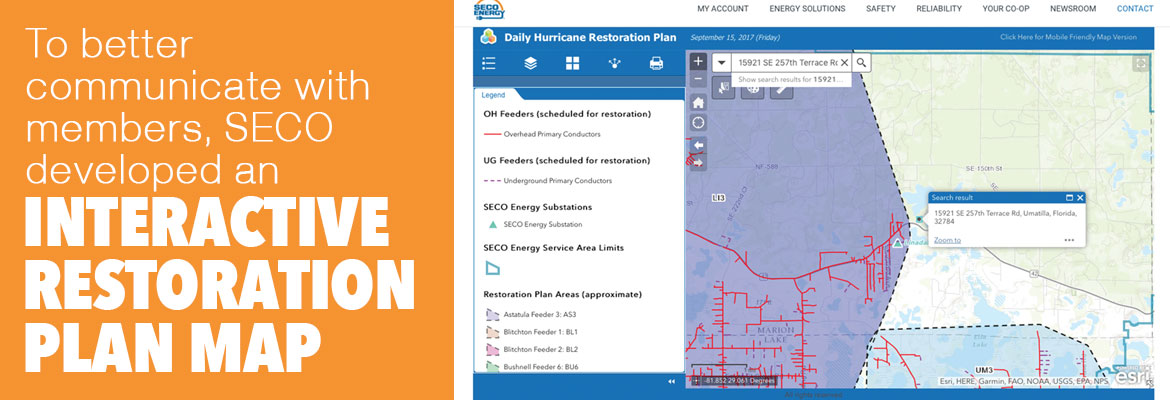
This resource became a useful communication tool for members seeking information on the timing of their particular area’s restoration. Social media was a blessing throughout the hurricane and restoration, and helped members keep in touch when CenturyLink went down.
When Thursday dawned, progress slowed as SECO fought through new challenges and obstacles. High waters across roads and in homes prevented restoration in south Sumter County. Areas with significant damage took longer than planned. Stolen wire delayed restoration in Webster, Croom-A-Coochee and Lake Panasoffkee. Crews were redirected to allow restoration to continue in areas where we could restore larger numbers quickly.
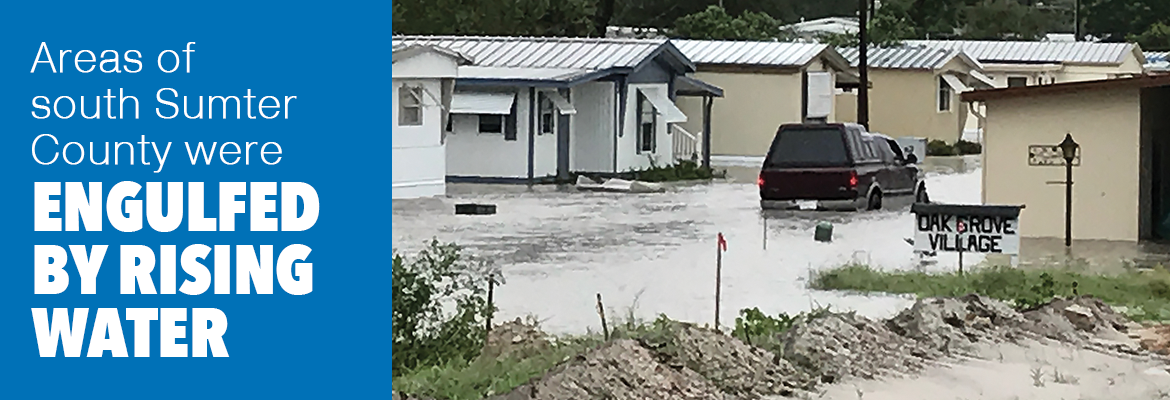
The weather threatened to hinder progress on Friday and Saturday, as the presence of lightning would bring restoration to a stop. We put the word out for farmers to stop cutting hay and for residents to not wash their cars. We prayed and crossed our fingers.
Prayers were answered, and on Saturday at noon, less than 10,000 members were without power. We were determined to have full restoration complete by the end of the day Sunday, September 17. More than 1,200 SECO crews, along with line and tree contractors converged for the last time on our territory to finish rebuilding the remaining lines, clear trees, replace poles, avoid alligators and respond to the remaining small pockets of outages.
Though it was admittedly a rough week for those who lost power, I am proud to say that by Sunday night, 99.9% of SECO members had power restored. Only about 70 accounts in south Sumter County were unable to receive electric service due to high water conditions.
Many of our employees worked 20-hour days, didn’t have power at home and could have auditioned for a role on The Walking Dead. I am grateful for the hard work and dedication of the entire SECO team. I’m also grateful for the thousands of line and tree contractors who traveled thousands of miles to Florida, leaving their families to aid ours during Hurricane Irma restoration. They have my respect and appreciation.
In each major restoration event, there are lessons learned. Sometimes Murphy’s Law prevailed and other times, thankfully, we had favor and won the day. As a team, we celebrated the highs and worried through the lows.
Nature’s Reflections will be back next month. Clearly, Mother Nature made her presence known through Hurricane Irma as these photos show.
I believe in preparing for the worst and praying for the best. Hurricane Irma may be as close to the worst we will ever see. Today, let’s count our blessings and be thankful.
Sincerely,
Jim Duncan
Chief Executive Officer
Read the full October 2017 SECO News here.
